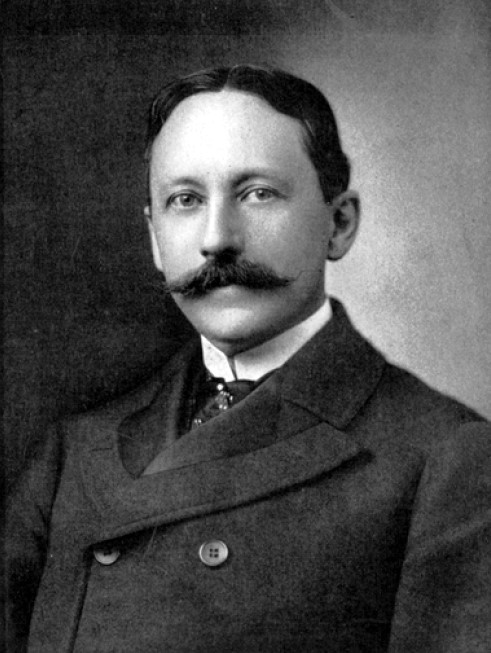- Details
- Hits: 567
Railroad Men: Charles A. Wright
From the Daily Mining Gazette, December, 12, 2015 and other excerpts:
 As general manager of the Mineral Range Railroad, Charles A. Wright had been the driving force behind linking the Keweenaw Peninsula with the rest of the Copper Country by rail. In 1885, Wright had petitioned Houghton County for permission to build a railroad bridge across Portage Lake that would allow the MRRR to reach Houghton from Hancock. The county government, however, did not want an excess of bridges spanning the lake interfering with shipping. In stead, the county forced the private company that owned the existing toll bridge to add a lower deck. This lower deck would handle rail traffic as well as hoof and pedestrian traffic.
As general manager of the Mineral Range Railroad, Charles A. Wright had been the driving force behind linking the Keweenaw Peninsula with the rest of the Copper Country by rail. In 1885, Wright had petitioned Houghton County for permission to build a railroad bridge across Portage Lake that would allow the MRRR to reach Houghton from Hancock. The county government, however, did not want an excess of bridges spanning the lake interfering with shipping. In stead, the county forced the private company that owned the existing toll bridge to add a lower deck. This lower deck would handle rail traffic as well as hoof and pedestrian traffic.
Wright also dreamed of a new railroad that would operate between Houghton and Greenland, in Ontonagon County. The dream became a reality in 1900 when the Copper Range Railroad officially began operating, with its engine yard located on the Portage Lake waterfront in West Houghton.
When Wright had organized the Northern Michigan Railroad back in 1889, he had approached William A. Paine of Boston as a potential investor in the railroad. Wright, who had been president of the NMRR, had been reduced to general manager of the line when Paine’s new company, Copper Range, took over and renamed the line the Copper Range Railroad in 1899. Once the line was completed in 1900, Wright was removed as manager, to be replaced by R.T. McKeever.
Wright was not overly worried. It was not the first time the MRRR had faced competition on the Keweenaw Peninsula.
Albert S. Bigelow, who controlled the Tamarack and Osceola mines near Calumet, had objected to the high rates charged by the MRRR, and displayed his objection by forming the Hancock and Calumet Railroad. Bigelow may have discovered that paying high freight rates was cheaper than building an independent road. Or he may not have been able to find enough investors to successfully build a new road. Whatever the reason, the same year the H&C RR was organized it leased its line to the MRRR in perpetuity.
In 1893, the Duluth, South Shore & Atlantic Railroad took control of both the MRRR and the H&C; the DSS&A had been placed under the control of the Canadian Pacific Railroad in 1890. To Wright, a short-line railroad like the Copper Range was no real threat to the DSS&A; it was little more than an inconvenience.
If the CRRR was inconvenient on the Keweenaw Peninsula, its achievements to the southwest cannot be overstated. The line opened up the territory it passed through to settlement and mineral exploration. In 1899, the region was nearly all wilderness, with the exception of three mines: the Atlantic Mining Company, controlled by Joseph E. Gay and John Stanton, and the Winona and the King Philip mines, some 30 miles to the southwest.
The organization of the Baltic Mining Company is evidence of the opportunities created by the railroad. In 1872, Gay and Stanton had created the Atlantic Mining Company by consolidating the defunct South Pewabic and Adams Mining Companies. Stanton had sent parties to explore the adjacent property south, which led to the discovery of the Baltic Lode in 1882. Yet, it wasn’t until 1897 that the Baltic Mining Company was organized, the same year Paine’s new Copper Range Company took over Wright’s Northern Michigan Railroad. It is highly probable Paine had informed Stanton of his intention of building the railroad.
Stanton was a mining engineer, not a banker. Paine was a banker, but knew very little about mining. The two men would work very closely together in reorganizing the Copper Range Consolidated Company in 1901, which would be second only the Calumet & Hecla Mining Company in Michigan copper production.
Wright went on to promote the Keweenaw Central Railroad north of Mohawk Mine to Manton and Lac Le Belle, an area with mining potential and recreation.
Wright organized the Superior Savings Bank in Hancock in 1890 and in 1896 the State Savings Bank of Laurium. He was Vice President of Peninsula Electric Light and Power and a director in various other corporations. He was instrumental in the construction of the Mineral Range Railroad bridge across Portage Lake in 1885. [MTU]
Wright died unexpectantly in 1911 at the age of 56 while roller skating at a local roller rink. The cause of death was "apoplexy", what would later be known as unconsciousness from a stroke. [DFP-1911-0519]

